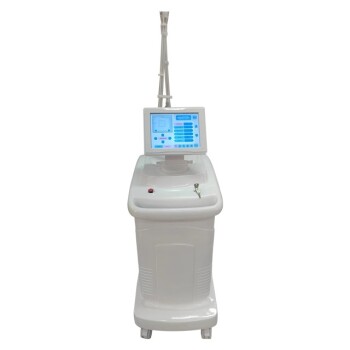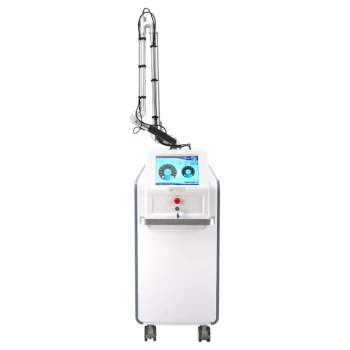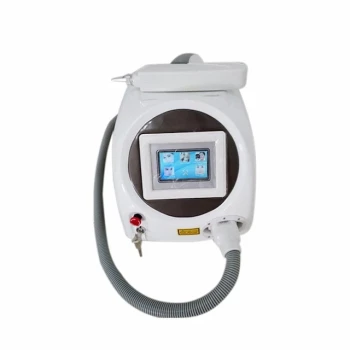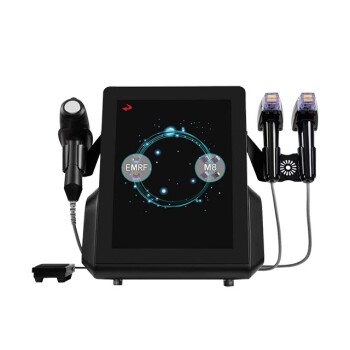Yes, all laser treatments have potential side effects, but the vast majority are mild and temporary. For common procedures like laser hair removal, you can expect temporary skin irritation, including some redness and swelling around the treated area. These expected reactions are a sign the laser is working and typically resolve on their own within a few hours.
The critical distinction to understand is not if side effects exist, but the difference between a normal, temporary healing response and a rare but serious complication. The skill of your provider and your adherence to aftercare are the most significant factors in ensuring a safe outcome.

The Anatomy of a Laser Side Effect
To understand the side effects, you must first understand how a laser works. It's a process of controlled thermal injury designed to achieve a specific outcome.
The Intended "Injury"
A medical laser delivers a highly concentrated beam of light energy to a specific target in the skin, such as a hair follicle or unwanted pigment. This energy converts to heat, selectively damaging the target while leaving the surrounding tissue unharmed.
The Body's Natural Response
The redness and swelling you see immediately after treatment are your body's natural inflammatory response to this controlled heat. This is a sign that the body has registered the treatment and is beginning its healing and regeneration process.
Common Reactions vs. Potential Complications
The type and intensity of side effects depend heavily on the type of laser treatment you receive. It's crucial to separate expected downtime from an adverse event.
Expected Reactions for Laser Hair Removal
As the most common laser procedure, its side effects are well-documented and minimal. You can expect mild redness and swelling around each hair follicle, sometimes called perifollicular edema. This typically looks like small, raised bumps and fades within a few hours to a day.
Expected Reactions for Laser Skin Resurfacing
More intensive treatments, like those for wrinkles or acne scars, will have more significant and prolonged "side effects" that are part of the planned recovery. This can include widespread redness, peeling, crusting, and swelling that can last for several days or even weeks, depending on the laser's intensity.
Understanding the More Serious (and Rarer) Risks
While uncommon when performed by a qualified professional, more significant complications are possible. These are not part of the normal healing process.
Pigmentary Changes
The heat from the laser can sometimes stimulate or damage melanocytes (pigment-producing cells). This can lead to hyperpigmentation (dark spots) or hypopigmentation (light spots). This risk is higher for individuals with darker skin tones if the wrong laser or settings are used.
Burns and Blistering
This is not a normal side effect and is almost always a result of operator error or incorrect settings for the patient's skin type. A properly administered treatment should not cause burns.
Scarring
Scarring is very rare but can occur if the skin is burned or if post-treatment instructions, such as avoiding sun exposure and not picking at scabs, are ignored.
Infection
Any procedure that breaks the skin's surface carries a small risk of infection. Following aftercare instructions, such as keeping the area clean, is essential to prevent this, particularly after more aggressive resurfacing treatments.
How to Make an Informed Decision
Your safety and results are directly tied to the choices you make before the treatment even begins.
- If your primary focus is a low-downtime procedure like hair removal: Expect mild, temporary redness as a normal part of the process, but thoroughly vet your provider to almost entirely eliminate the risk of rare complications.
- If you are considering an intensive treatment like skin resurfacing: Understand that significant redness, peeling, and a multi-day recovery period are an expected and necessary part of the healing process, not an adverse reaction.
- If you have a darker skin tone or a history of scarring: Your highest priority must be finding a board-certified dermatologist with extensive experience using lasers specifically designed to be safe for your skin type.
Ultimately, understanding the distinction between a normal reaction and a true complication is the key to a safe and effective laser treatment experience.
Summary Table:
| Side Effect Type | Common Examples | Typical Duration | Key Factor |
|---|---|---|---|
| Normal Healing Response | Redness, Swelling (Perifollicular Edema) | Few hours to a day | Sign the laser is working effectively |
| Expected Downtime (Resurfacing) | Widespread Redness, Peeling, Crusting | Several days to weeks | Part of the planned recovery process |
| Rare Complications | Burns, Blistering, Scarring, Pigment Changes | Can be long-lasting or permanent | Often linked to provider error or poor aftercare |
Achieve Safe, Professional Laser Results with BELIS
Minimizing side effects and maximizing results starts with using the right technology in expert hands. BELIS specializes in professional medical aesthetic equipment, providing advanced, reliable laser systems designed for safety and efficacy.
Whether you run a medical aesthetics clinic or a premium beauty salon, our equipment helps you deliver superior treatments with predictable outcomes for your clients.
Ready to enhance your service offerings and ensure client safety?
Contact our experts today to find the perfect laser solution for your practice.
Visual Guide
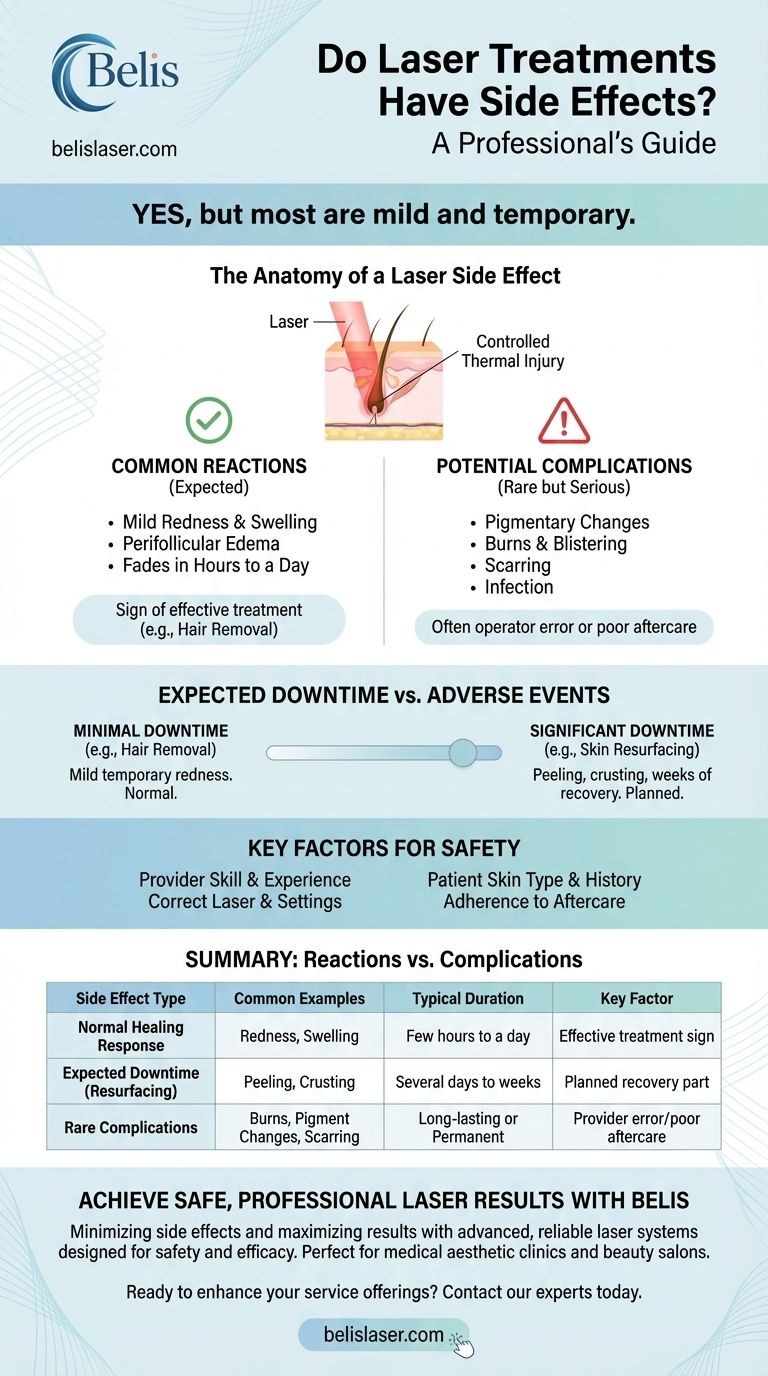
Related Products
- Fractional CO2 Laser Machine for Skin Treatment
- Fractional CO2 Laser Machine for Skin Treatment
- Pico Laser Tattoo Removal Machine Picosure Picosecond Laser Machine
- Hydrafacial Machine Facial Clean Face and Skin Care Machine
- Pico Picosecond Laser Machine for Tattoo Removal Picosure Pico Laser
People Also Ask
- What is the downside of a CO2 laser? Weighing Dramatic Results Against Downtime & Risks
- How does fractional CO2 laser work? The Science Behind Powerful Skin Renewal
- Why am I not seeing results after a CO2 laser? Your Patience is the Key to Long-Term Skin Rejuvenation
- How often should you do fractional CO2 laser? The 4-6 Week Rule for Optimal Results
- What is a fractional CO2 laser machine used for? A Guide to Advanced Skin Resurfacing
